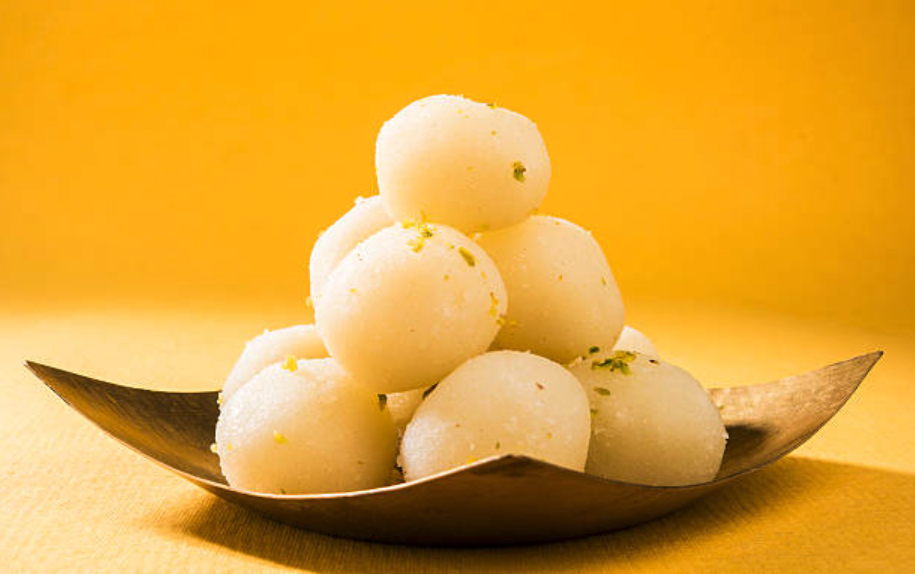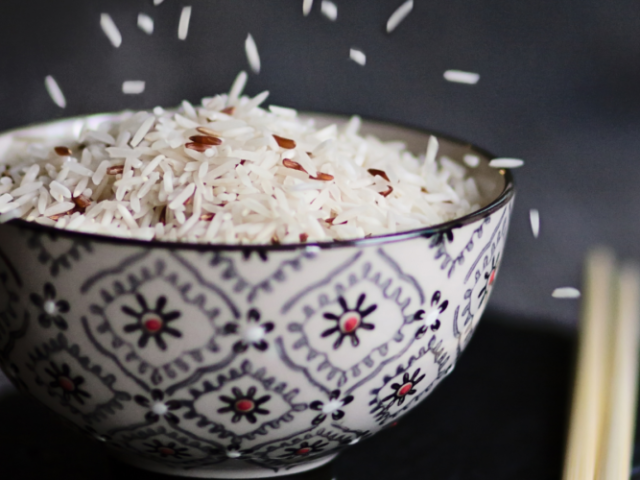It is always said that sweets always come at the end of all meals, and sweets bring about happiness in a person’s life. The battle of Rasagolla (Odia version) and Rosogolla (Bengali version) till date has not come to an end. Despite both the states getting separate GI tags for their own types of Rasgullas, the debate is still on about which state is the real inventor of Rasgulla.
Rasgulla is basically an Indian sweet which is usually syrupy and is one of the popular desserts in the Indian subcontinent. Not just in India, but Rasgulla has its immense fan following abroad as well. Rasgulla comes in various names, shapes, colors, texture, juice content and method of manufacturing. It is primarily made of chenna and sugar but in every place in India, this Indian savory is made by diversified methods. The various types of rasgullas available all across India are Pahala Rasgulla (famous in Bhubaneswar and Cuttack), Baked Rasgulla, Kamalabhog rasgulla, Rajbhog rasgulla, Rasgulla from Kalahandi, Orissa, etc.
History
Odisha and West Bengal have fought bitter battles over Rasgulla. Both sides had great precedents to present over this debate.
West Bengal argued that Rosogolla was given birth by Bengalis. They claimed that it was contrived in the year 1868 by the legendary Kolkata – based confectioner Nobin Chandra Das. They said that N.C. Das made rosogollas by boiling a rounded mix of chenna and semolina in sugar syrup. In 1930, his son Krishna Chandra Das, famously now known as K.C. Das, introduced vacuum packing for better preservation of the sweets. Over the following decades, this family instituted various companies for the manufacture and selling of sweets. His descendants claimed that he was the original creator of the recipe of Rosogolla, but according to another theory, it was claimed that he only modified the traditional Odisha rasgulla recipe.
Many claims were that Portuguese who had come to India started to experiment with chenna (which was adopted by the Bengalis from the Portuguese then) and that is how rosogolla was created in West Bengal for the first time. Pritha Sen, an extensive researcher in the culinary traditions of Bengal added that most Bengali families in the 18th Century had cooks employed from Odisha. It is likely that they bought the recipe with them.
Odisha argued that rasagola is believed to have originated back in the 11th century and associated with a story of Lord Jagannath pacifying an angry Goddess Laxmi with the sweet which today in Odisha is called rasagola. The word also finds mentions in works of Balram Das, a 15th Century poet. It is believed that a temple priest taught the villagers of Pahala the art of curdling excess milk and that started Odisha’s journey of making varieties of Rasagolla and other chenna sweets. On July 30, the day of the Niladri Bijaya in 2015, the hashtag #RasagolaDibasa celebrated the sweet’s Odia origin.
Bengali experts argued to this saying that rosogolla couldn’t have had existed in India until the 17th Century when the Portuguese brought recipes for curdling milk. Until then, Indian sweets were made of khoya and not cottage cheese (Chenna). Nevertheless, curdled milk would not have been offered to the deity at all.
WHO WON AND HOW?
There were many other theories, stories and myths that claimed the origins of Rasgulla by both the states. Many historians’ opine that Rasgulla is the symbol of all things in Bengali.
In November 2017, West Bengal was awarded the GI tag for Rasgulla. There was a lot of joy and happiness among Bengalis, so much that the State Government decided to declare 14th November 2018 as Rasgulla Divas.
Odisha’s government filed a petition and their efforts bore fruit on July 29, 2019, when Odisha’s Rasagola too got the GI Tag.
BUT WHAT IS A GI TAG?
World Intellectual Property Organization (WIPO) says, “A geographical indication is a sign used on products that have a specific geographical origin and possess qualities or reputation that are there due to that origin.
A GI Tag is sort of an intellectual property which recognizes the origin of a product. The GI registration office is in Chennai. Once granted, the GI prevents the unauthorized use of geographical indication giving it a unique identity. The GI tag for the same product to both the neighboring states recognizes the two distinct varieties in taste and texture.
Odisha’s Rasagola is a very soft feel, juicy and non-chewy with a reddish texture variety and can be swallowed without any teeth pressure. The Bengali Rosogolla is circular in shape, milky white in colour and basically spongy yet chewy. Both have their unique traits and a unique identity that differentiates them from one another.
CONCLUSION
The battle over the origin of food products for the purpose of obtaining GI tags has been reported all over the world. There have been battles among other countries for food products. One such being the dish named Kimchi. There was a battle between Japan and South Korea in 1996 with regard to the origination of Kimchi (it is a fiery fermented staple dish which is made with a widely varying selection of seasonings and salted seafood). In 2008, Israel and Lebanon argued over Hummus.
As globalization progresses, many local cultures sometimes feel nervous about losing “their” products to others. The battle between Odisha and West Bengal may have come to a draw but the war over Rasgulla’s origin will continue for many more years to come. In the end, no matter what the result says, Rasgulla from anywhere will taste just as sweet as others.




